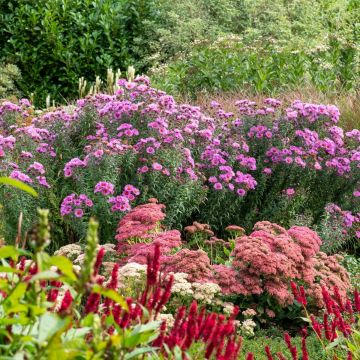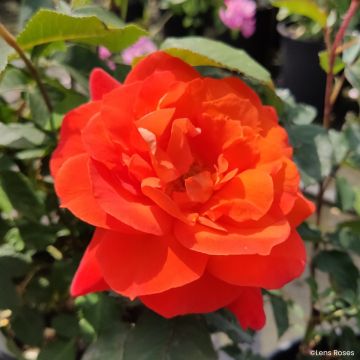

Penstemon barbatus Iron Maiden
Penstemon barbatus Iron Maiden
Penstemon barbatus Iron Maiden
Beardtongue, Scarlet Bugler
Special offer!
Receive a €20 voucher for any order over €90 (excluding delivery costs, credit notes, and plastic-free options)!
1- Add your favorite plants to your cart.
2- Once you have reached €90, confirm your order (you can even choose the delivery date!).
3- As soon as your order is shipped, you will receive an email containing your voucher code, valid for 3 months (90 days).
Your voucher is unique and can only be used once, for any order with a minimum value of €20, excluding delivery costs.
Can be combined with other current offers, non-divisible and non-refundable.
Why not try an alternative variety in stock?
View all →This plant carries a 6 months recovery warranty
More information
We guarantee the quality of our plants for a full growing cycle, and will replace at our expense any plant that fails to recover under normal climatic and planting conditions.
Would this plant suit my garden?
Set up your Plantfit profile →
Description
Elegant and lightweight, the Penstemon barbatus 'Iron Maiden', also known as Beard-tongue, hides a robust health beneath its airy flowering, so welcome at the end of summer. While summer blooms fade away, its tall stems emerge from the flowerbeds, adorned with delicate bell-shaped flowers in a soft pinkish-red, gentle on the eyes. Its tall spikes rise above a clump of very fine, semi-evergreen, green-blue foliage for three months. It creates a superb tableau with grasses in a flowerbed or a wild bouquet. This very hardy perennial is resistant to drought, loves relatively fertile soils and adores the sun.
Ole Penstemon barbatus is a short-lived bushy herbaceous perennial belonging to the family Scrophulariaceae, native to the mountains of the western United States, up to 4000 meters (13123 feet) altitude, in Utah, Nevada, Arizona, Colorado, and Texas. The 'Iron Maiden' variety, from which it originates, has retained many of the characteristics of this very resistant plant. It forms a semi-evergreen basal clump consisting of fine, linear, green-blue foliage, from which floral stems up to 1 metre (3 feet) tall emerge in the second half of summer. The tubular bell-shaped flowers, 4 to 5 cm (2in) long, are individually distributed along the stem. They display a bright, soft, vibrant hue, intermediate between red and pink. A multitude of seeds is dispersed after flowering. This plant has a deep root system, which sometimes makes transplantation difficult but allows it to find some coolness at depth.
The Penstemon barbatus is rarely used in gardens. This is probably because it sometimes struggles to establish when planted in spring. It should be planted in well-drained flowerbeds in autumn in the company of shrubby salvias, toadflaxes, and grasses such as Stipa tenuifolia or Muhlenbergia capillaris. It will then have time to sink its roots deep and survive the summer without damage. The 'Iron Maiden' Beard-tongue is a very cheerful plant with a wild charm that will keep company with annual poppies, small blue stars of asters, and damask flowers. It is also a lovely flower for bouquets.
Report an error about the product description
Flowering
Foliage
Plant habit
Botanical data
Penstemon
barbatus
Iron Maiden
Scrophulariaceae
Beardtongue, Scarlet Bugler
Cultivar or hybrid
Planting and care
Sow the seeds of galane from late winter to mid-spring on the surface of a good potting soil, barely covering the seeds with a thin layer of compost or vermiculite. Germination takes 14 to 30 days at 15-18°C (59-64.4°F). Keep the sowing in the light in a sealed polyethene bag.
When the plants are large enough to handle, transplant them into 8cm (3in) pots and grow them in cooler conditions. Then, gradually acclimate them to outdoor conditions and place them outside in late spring or early autumn. Space them 30cm (12in) apart. Set them outside in full sun and well-drained soil.
The Penstemon barbatus is a plant that grows in mountainous climates. As such, it tolerates drought but not heat as well. Its flowering will be more beautiful in the sun and slightly cool soil but imperatively well-drained. In heavy soil, it is useful to mix coarse river sand or gravel with the planting soil and loosen it to a depth of 50cm (20in).
Sowing period
Intended location
Planting & care advice
This item has not been reviewed yet - be the first to leave a review about it.
Haven't found what you were looking for?
Hardiness is the lowest winter temperature a plant can endure without suffering serious damage or even dying. However, hardiness is affected by location (a sheltered area, such as a patio), protection (winter cover) and soil type (hardiness is improved by well-drained soil).

Photo Sharing Terms & Conditions
In order to encourage gardeners to interact and share their experiences, Promesse de fleurs offers various media enabling content to be uploaded onto its Site - in particular via the ‘Photo sharing’ module.
The User agrees to refrain from:
- Posting any content that is illegal, prejudicial, insulting, racist, inciteful to hatred, revisionist, contrary to public decency, that infringes on privacy or on the privacy rights of third parties, in particular the publicity rights of persons and goods, intellectual property rights, or the right to privacy.
- Submitting content on behalf of a third party;
- Impersonate the identity of a third party and/or publish any personal information about a third party;
In general, the User undertakes to refrain from any unethical behaviour.
All Content (in particular text, comments, files, images, photos, videos, creative works, etc.), which may be subject to property or intellectual property rights, image or other private rights, shall remain the property of the User, subject to the limited rights granted by the terms of the licence granted by Promesse de fleurs as stated below. Users are at liberty to publish or not to publish such Content on the Site, notably via the ‘Photo Sharing’ facility, and accept that this Content shall be made public and freely accessible, notably on the Internet.
Users further acknowledge, undertake to have ,and guarantee that they hold all necessary rights and permissions to publish such material on the Site, in particular with regard to the legislation in force pertaining to any privacy, property, intellectual property, image, or contractual rights, or rights of any other nature. By publishing such Content on the Site, Users acknowledge accepting full liability as publishers of the Content within the meaning of the law, and grant Promesse de fleurs, free of charge, an inclusive, worldwide licence for the said Content for the entire duration of its publication, including all reproduction, representation, up/downloading, displaying, performing, transmission, and storage rights.
Users also grant permission for their name to be linked to the Content and accept that this link may not always be made available.
By engaging in posting material, Users consent to their Content becoming automatically accessible on the Internet, in particular on other sites and/or blogs and/or web pages of the Promesse de fleurs site, including in particular social pages and the Promesse de fleurs catalogue.
Users may secure the removal of entrusted content free of charge by issuing a simple request via our contact form.
The flowering period indicated on our website applies to countries and regions located in USDA zone 8 (France, the United Kingdom, Ireland, the Netherlands, etc.)
It will vary according to where you live:
- In zones 9 to 10 (Italy, Spain, Greece, etc.), flowering will occur about 2 to 4 weeks earlier.
- In zones 6 to 7 (Germany, Poland, Slovenia, and lower mountainous regions), flowering will be delayed by 2 to 3 weeks.
- In zone 5 (Central Europe, Scandinavia), blooming will be delayed by 3 to 5 weeks.
In temperate climates, pruning of spring-flowering shrubs (forsythia, spireas, etc.) should be done just after flowering.
Pruning of summer-flowering shrubs (Indian Lilac, Perovskia, etc.) can be done in winter or spring.
In cold regions as well as with frost-sensitive plants, avoid pruning too early when severe frosts may still occur.
The planting period indicated on our website applies to countries and regions located in USDA zone 8 (France, United Kingdom, Ireland, Netherlands).
It will vary according to where you live:
- In Mediterranean zones (Marseille, Madrid, Milan, etc.), autumn and winter are the best planting periods.
- In continental zones (Strasbourg, Munich, Vienna, etc.), delay planting by 2 to 3 weeks in spring and bring it forward by 2 to 4 weeks in autumn.
- In mountainous regions (the Alps, Pyrenees, Carpathians, etc.), it is best to plant in late spring (May-June) or late summer (August-September).
The harvesting period indicated on our website applies to countries and regions in USDA zone 8 (France, England, Ireland, the Netherlands).
In colder areas (Scandinavia, Poland, Austria...) fruit and vegetable harvests are likely to be delayed by 3-4 weeks.
In warmer areas (Italy, Spain, Greece, etc.), harvesting will probably take place earlier, depending on weather conditions.
The sowing periods indicated on our website apply to countries and regions within USDA Zone 8 (France, UK, Ireland, Netherlands).
In colder areas (Scandinavia, Poland, Austria...), delay any outdoor sowing by 3-4 weeks, or sow under glass.
In warmer climes (Italy, Spain, Greece, etc.), bring outdoor sowing forward by a few weeks.



















































